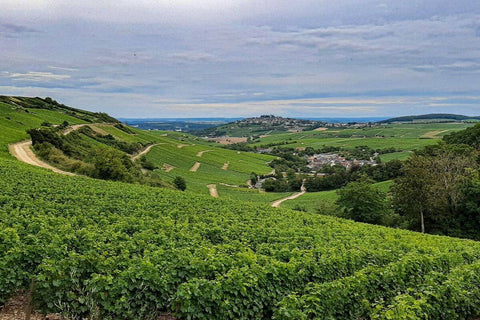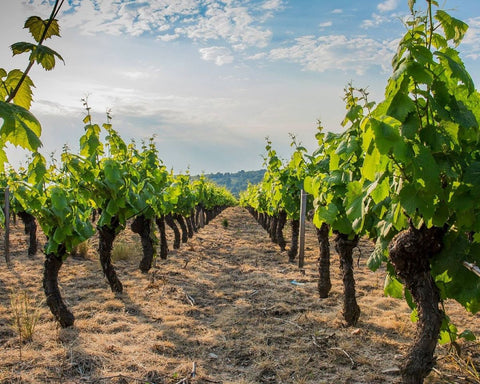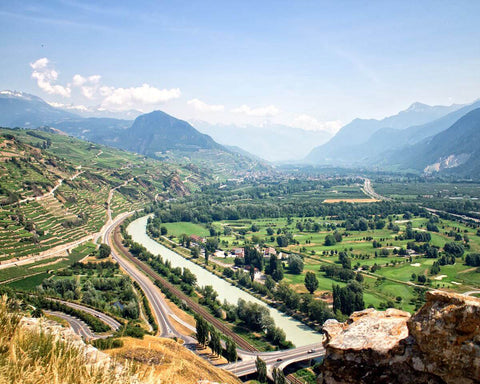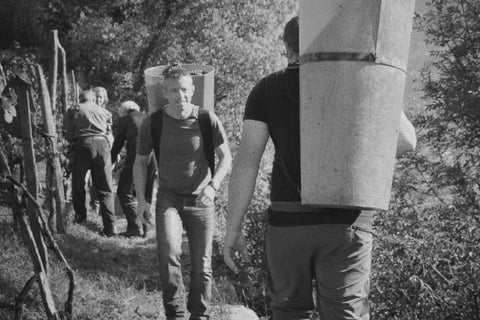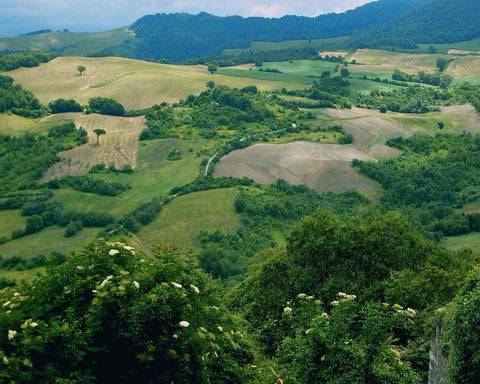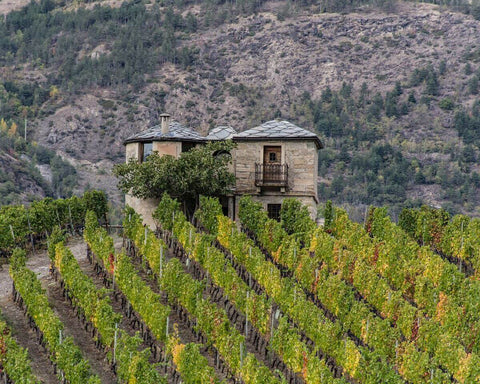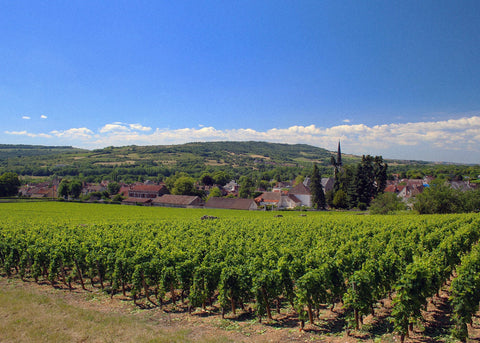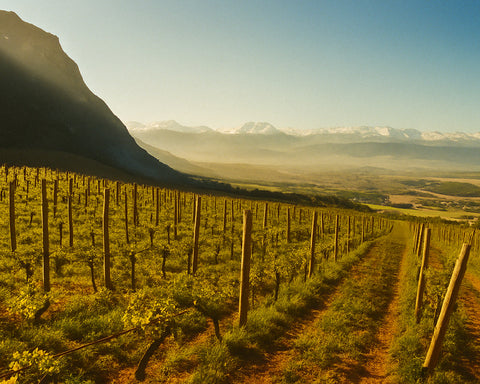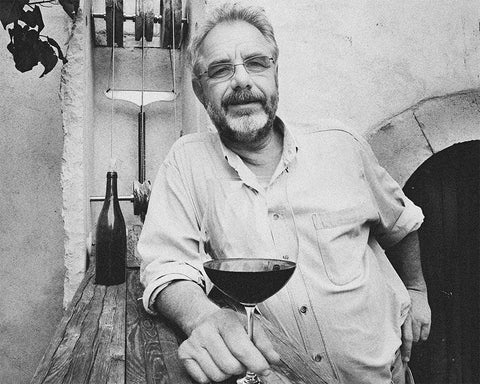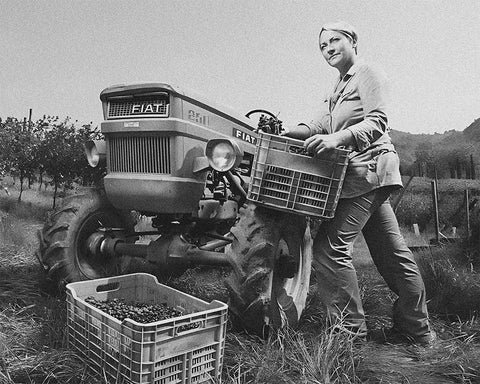The Loire Valley, often called the "Garden of France," is one of the country's most iconic and historically significant wine regions. Stretching along the Loire River, this picturesque region is globally renowned for its diverse vineyard tapestry, excellent wine and yet affordable wines, and rich culinary tradition.
Over the centuries, the Loire Valley has become a beacon for organic farming and natural winemaking. The quality of the wines from the Loire is evident in its world-renowned Sancerre and Vouvray wines, two subregiond
The wines of the Loire Valley, particularly its aromatic whites and vibrant reds, are celebrated for their purity, complexity, and ability to pair seamlessly with a wide array of cuisines, making them favorites among wine enthusiasts worldwide.
Table of Contents
History of the Loire Valley
The Loire Valley, with its strategic location along the Loire River, has always been a region of significant historical importance, both geopolitically and viticulturally. Its history is a rich tapestry of cultural influences, from the ancient Gauls and Romans to the medieval nobility and Renaissance kings, who all recognized the region's potential for wine production.
Over the centuries, the Loire Valley has undergone numerous transformations, from being a key region during the reign of the French monarchy to playing a pivotal role in the country's cultural and agricultural development. Throughout these historic shifts, one constant has remained: the Loire Valley's unwavering commitment to producing exceptional wines, a tradition passed down through generations.
The history of winemaking in the Loire Valley dates back to the Roman era, with archaeological evidence suggesting that viticulture was well-established in the region by the 1st century AD. The Romans introduced advanced winemaking techniques and expanded the vineyards, laying the foundation for the Loire Valley's future as a major wine-producing area.
Following the fall of the Roman Empire, monastic orders played a crucial role in preserving and advancing viticulture in the Loire Valley. Monasteries became centers of agricultural knowledge, and monks meticulously maintained vineyards and documented their winemaking practices, ensuring the continuation of viticultural traditions.
During the medieval period, the Loire Valley's wines gained recognition and prestige, particularly among the nobility and clergy. The region's strategic location along major trade routes facilitated the export of its wines to other parts of Europe, further enhancing its reputation.
The Renaissance marked a significant turning point in the Loire Valley's winemaking history. During this time, the region's distinctive grape varieties, such as Chenin Blanc and Sauvignon Blanc, began to gain prominence. The development of these varietals, combined with the region's unique terroir, led to the production of wines with remarkable character and complexity.
The 19th and 20th centuries were periods of both challenge and innovation for the Loire Valley's wine industry. The region faced the devastating impact of phylloxera, a vine-killing pest that ravaged European vineyards. In response, the Loire Valley undertook extensive replanting efforts, often using grafted rootstocks resistant to phylloxera, which eventually allowed the region to recover and continue its winemaking traditions.
The early 20th century saw the Loire Valley in the turmoil of two World Wars. Despite these challenges, the resilience of the Loire Valley's winemakers shone through as they worked to rebuild and rejuvenate their vineyards. The post-war period marked the beginning of a renaissance for Loire Valley wines, with a renewed focus on quality and innovation.
In recent decades, the Loire Valley has firmly established itself as one of the world's premier wine regions. The introduction of the AOC (Appellation d'Origine Contrôlée) system in the 1930s helped protect and promote the region's wines. The Loire Valley's commitment to quality, combined with its unique terroir, has earned it a place among the elite wine-producing areas of the world.
Terroir of the Loire Valley
The Loire Valley's terroir is characterized by its unique interplay of climate, topography, and soil. The region enjoys a temperate maritime climate, with mild winters and warm summers, moderated by the influence of the Loire River.
The varied topography of the Loire Valley, with its mix of rolling hills, river valleys, and plains, provides an optimal setting for vineyards, ensuring ample sunlight and drainage. The soil composition is incredibly diverse, ranging from limestone and clay to flint and sand, each imparting distinct characteristics to the wines.
This diverse terroir supports the cultivation of a wide range of grape varieties, each expressing a unique facet of the region's multifaceted character.
The Geology of the Loire Valley
The Loire Valley's landscape predominantly comprises rolling hills and river valleys, with elevations ranging from sea level to about 200 meters above sea level. The region is divided into several sub-regions, each with unique geological characteristics influencing the style and quality of the wines produced.
- Central Vineyards: Known for its limestone and flint soils, this area provides excellent drainage and mineral content, essential for producing high-quality Sauvignon Blanc and Pinot Noir grapes.
- Touraine: Characterized by a mix of clay, limestone, and sand, Touraine produces wines with a distinct fruitiness and freshness, particularly from Chenin Blanc and Cabernet Franc grapes.
- Anjou-Saumur: Known for its schist and slate soils, this area produces wines with a rich minerality and complexity, particularly from Chenin Blanc and Cabernet Franc grapes.
- Nantais: Characterized by its sandy and gravelly soils, Nantais is famed for producing crisp and refreshing Muscadet wines from the Melon de Bourgogne grape.
The region's geological diversity ensures that each sub-region can cultivate grapes that best match its soil type, enhancing the wines' expression and complexity.
Climate and Its Influence
The Loire Valley's climate is temperate maritime, characterized by mild winters and warm summers, with significant temperature variation between day and night. This diurnal range is crucial for grape ripening, allowing the development of sugars during the day and preserving acidity at night. The region's microclimates, influenced by the Loire River and its tributaries, further contribute to the distinctiveness of Loire Valley wines.
The Grapes of the Loire Valley
The Loire Valley is primarily known for its white grape varieties, which thrive in the region's diverse terroir. The most notable grapes are Chenin Blanc, Sauvignon Blanc, and Melon de Bourgogne.
White Grape Varietals
- Chenin Blanc: The cornerstone of the Loire Valley's most celebrated wines, Chenin Blanc produces a wide range of styles, from dry to sweet and sparkling, with high acidity and excellent aging potential.
- Sauvignon Blanc: Known for its aromatic intensity and crisp flavors, Sauvignon Blanc produces vibrant and refreshing wines with notes of citrus, green apple, and herbs.
- Melon de Bourgogne: The grape behind Muscadet wines, Melon de Bourgogne produces light, crisp, and minerally wines that are perfect with seafood.
Red Grape Varietals
- Cabernet Franc: The primary red grape of the Loire Valley, producing elegant, medium-bodied wines with flavors of red berries, herbs, and earth.
- Pinot Noir: Grown primarily in the Central Vineyards, Pinot Noir produces light, fruity wines with bright acidity and red berry flavors.
- Gamay: Known for its juicy, fruit-forward wines, Gamay is primarily grown in the Touraine and produces vibrant and easy-drinking reds.
Top Wines of the Loire Valley
Sancerre: Often regarded as one of the world's finest expressions of Sauvignon Blanc, Sancerre is characterized by its crisp acidity, vibrant citrus flavors, and distinct minerality. These wines are known for their elegance and ability to pair seamlessly with a variety of dishes.
Vouvray: Vouvray, made from Chenin Blanc, is celebrated for its versatility, producing wines that range from dry to sweet and sparkling. These wines are known for their high acidity, complex aromas of orchard fruits, and excellent aging potential.
Muscadet: Produced from the Melon de Bourgogne grape, Muscadet wines are light, crisp, and minerally, with a refreshing acidity that makes them perfect companions for seafood dishes.
Chinon: Chinon, made from Cabernet Franc, produces elegant and medium-bodied reds with flavors of red berries, herbs, and earth. These wines are known for their balance and ability to age gracefully.
Cuisine and Typical Products of the Loire Valley
The Loire Valley's culinary traditions are deeply intertwined with its wine culture, offering a rich array of dishes that complement the region's aromatic wines. The cuisine of the Loire Valley is characterized by its use of fresh, local ingredients and traditional cooking methods.
Loire Valley Antipasti
Meals in the Loire Valley often begin with a selection of antipasti, showcasing the region's diverse flavors and setting the stage for future courses. A typical antipasti spread might include:
- Rillettes: A savory spread made from slow-cooked pork, often served with crusty bread and cornichons.
- Goat Cheese Tart: A tart made with fresh goat cheese, herbs, and a buttery pastry crust, highlighting the region's renowned chèvre.
- Pâté de Campagne: A rustic country pâté made from pork and liver, seasoned with herbs and spices.
- Escargots à la Bourguignonne: Snails cooked in garlic and herb butter, often enjoyed as a starter with a glass of local wine.
Loire Valley First Courses
The first course in a Loire Valley meal often features soups, tarts, and other hearty dishes that highlight the region's grains and seasonal vegetables.
- Soupe à l'Oignon: A rich onion soup topped with a crusty bread slice and melted Gruyère cheese. It's a comforting dish that pairs well with Loire Valley wines.
- Quiche Lorraine: A savory tart filled with a mixture of eggs, cream, and bacon or ham, showcasing the region's love for rich, flavorful dishes.
- Boeuf Bourguignon: A traditional French stew made with beef braised in red wine, along with onions, mushrooms, and bacon.
- Tarte Tatin: An upside-down apple tart with caramelized apples and a buttery pastry crust, often enjoyed as a dessert or with afternoon tea.
Loire Valley Second Courses
The Loire Valley is known for its high-quality meats, particularly pork and game, often prepared in traditional, rustic dishes that highlight the region's culinary heritage.
- Coq au Vin: A classic French dish of chicken braised in red wine with mushrooms, onions, and bacon, often served with potatoes or noodles.
- Ragoût d'Agneau: A hearty lamb stew made with vegetables and herbs, reflecting the region's tradition of rustic, slow-cooked dishes.
- Magret de Canard: Duck breast seared and served with a sweet and tangy fruit sauce, often accompanied by potatoes or seasonal vegetables.
- Civet de Lièvre: A rich hare stew made with red wine, onions, and herbs, reflecting the region's tradition of game dishes.
Loire Valley Side Dishes
Loire Valley cuisine includes a variety of vegetable-based side dishes that complement the region's main courses and highlight the local produce.
- Gratin Dauphinois: A creamy potato gratin made with thinly sliced potatoes, cream, and garlic, baked until golden and tender.
- Haricots Verts Amandine: Green beans sautéed with butter and almonds, offering a simple yet flavorful accompaniment to meat dishes.
- Ratatouille: A Provençal vegetable stew made with tomatoes, zucchini, eggplant, and peppers, often served as a side dish or main course.
- Pommes de Terre Sarladaises: Sliced potatoes sautéed in duck fat with garlic and parsley, a rich and savory side dish.
Loire Valley Fromages (Cheeses)
The Loire Valley produces several renowned cheeses that are often enjoyed at the end of a meal, paired with local wines.
- Crottin de Chavignol: A small, goat's milk cheese with a firm texture and tangy flavor, often enjoyed with a glass of Sancerre.
- Valençay: A pyramid-shaped goat cheese with a soft, creamy texture and a distinctive ash coating.
- Sainte-Maure de Touraine: A cylindrical goat cheese with a characteristic straw running through the center, known for its smooth texture and tangy flavor.
- Pont-l'Évêque: A soft, washed-rind cheese made from cow's milk, known for its strong aroma and rich, creamy texture.
Loire Valley Dolci (Desserts)
Desserts in the Loire Valley often feature local fruits, nuts, and spices, providing a sweet conclusion to a meal.
- Tarte Tatin: An upside-down apple tart with caramelized apples and a buttery pastry crust, often enjoyed with a dollop of whipped cream.
- Clafoutis: A baked dessert made with black cherries arranged in a buttered dish and covered with a thick flan-like batter.
- Pithiviers: A traditional French pastry made with almond cream filling, encased in puff pastry, and baked until golden and flaky.
- Canelés: Small pastries with a soft and tender custard center and a dark, thick caramelized crust, often flavored with rum and vanilla.
Typical Products of the Loire Valley
The Loire Valley's cuisine is based on high-quality local products, many of which have achieved protected status, ensuring authenticity and traditional production methods.
Fruits
The Loire Valley is known for its exceptional fruit production, with orchards producing a variety of apples, pears, and cherries.
